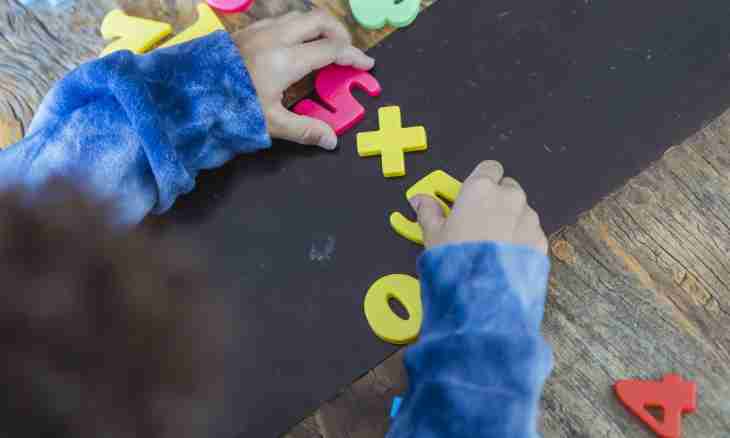The multiplication table is pleasant to not all children. Meanwhile it is necessary to learn it, otherwise in several years the child inevitably will have difficulties with calculations. In order that the younger school student or the preschool child remembered the multiplication table, it is not obligatory at all to force him to cram. Any material is remembered easily when the person understands it, and process of training is interesting and fascinating. The multiplication table in this sense — at all not an exception.
It is required to you
- - computer with the text editor;
- - cards with figures and signs of arithmetic actions;
- - a large number of small identical objects — matches, counters, cubes, animals.
Instruction
1. Explain to the child, what is multiplication. It is not obligatory to give a mathematical definition to the preschool child or the younger school student, it will be made by the teacher. The pupil has to understand that multiplication serves in order that it was not necessary to add the same number many times. Use uniform objects for an explanation. For example, put two stones before the child and ask what will turn out if to stones to add two. And if to add two more? How many times did we take 2 objects that 6 turned out? Repeat this task with different objects and with their different quantity.
2. Explain how examples register in multiplication and what means each number. For example, 4х5 means that 4 identical subjects took 5 times. It is possible to rearrange factors and to take four times five objects. The result will turn out the same.
3. Draw a square. It can be done on the sheet of paper or on the computer. Make 11 columns on width and 11 lines on height. The right top cage remains empty, in other cells of the top line write number from 1 to 10. Make the same in an extreme left column. Together with the child fill other lines and columns. In the column second at the left write results of multiplication of unit by each subsequent number. In the following column there will be results of multiplication on 2, 3 , etc. Thus, the number standing in each cell represents the work of numbers of the first line and the column first at the left.
4. Offer the child several tasks. Ask it to find what the result of multiplication 3 and 5, 7 and 6 , etc. is equal to. Do not forget to ask also about how number 56 or 45 turns out. The child with pleasure will look for the necessary results, in particular there is a table is made on the computer. When the kid learns to be guided well in a square, suggest it to make just the same, but for multiplication of numbers from 11 to 20, and then and from 21 to 30 and further. If he understands the principle of multiplication, the task it will not cause special difficulties in it. Suggest it to consider at the first moment on the calculator what needs to be written in each section.
5. Pythagoras's table can not always appear at the child near at hand. Explain to him what hints exist. On 9 it is possible to multiply, for example, on fingers. Suggest the pupil to put hands before yourself palms down. Let he will conceive number which needs to be increased by 9. For example, it will be number 4. Count it on fingers from left to right. The forefinger of the left hand will turn out. Look how many fingers remained to the left of it and how many on the right on both hands. At the left average are located, anonymous and a little finger, that is three. On the right — 6. Respectively, the work will equal 36.
6. Learn several counting rhymes. "Five five — twenty five" and "six six — thirty six", as well as other rhymed examples, will allow the child to orient in case of need. He knows for sure that if six times to take six apples, then 36 will turn out. Respectively, 6х7 — it is 6 apples more. Further it is possible to show to the child ways of fast multiplication.

